pbs-food:
February 28th is National Chili Day!Let’s make some chilli! Happy Chilli Day!
Chili Recipes | PBS Food
Source: http://thechefslab.tumblr.com/post/44241781072
Food, FoodDay, Chilli, Recipe
February 28th is National Chili Day!Let’s make some chilli! Happy Chilli Day!
Chili Recipes | PBS Food
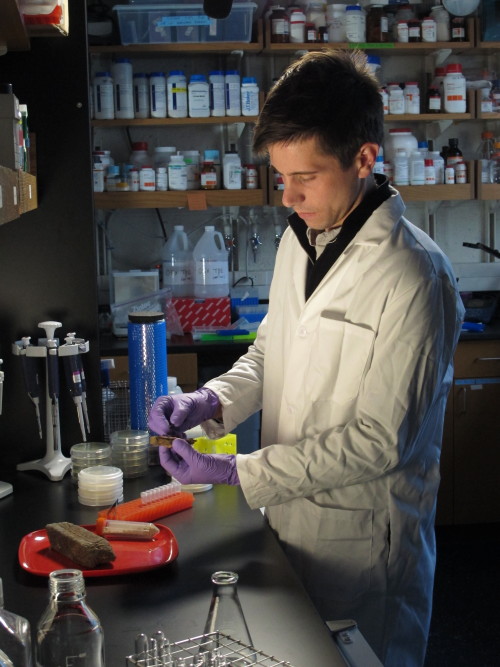
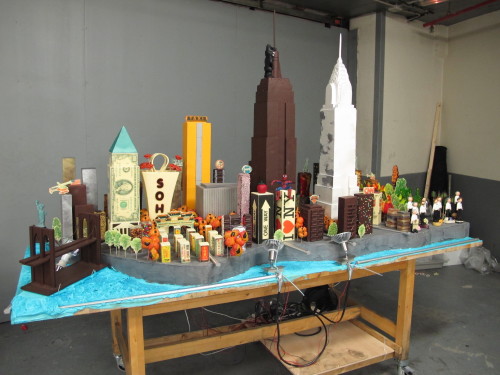
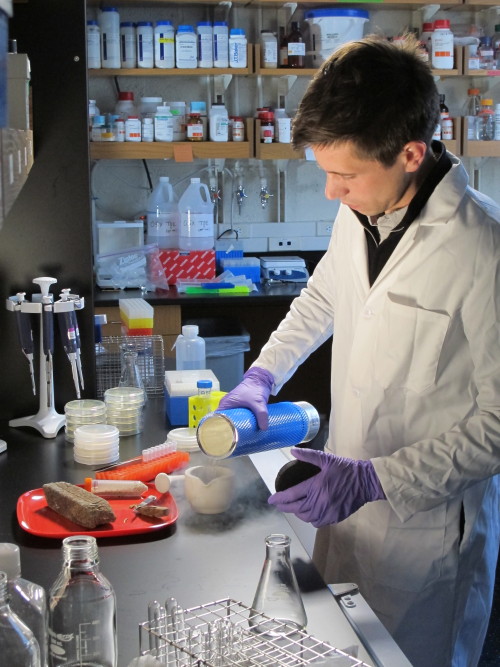

Behind the Scenes: PigThis kills me haha! I don’t mean to be a lab safety nazi, but safety in the workplace is extremely important if you don’t want to get hurt and save yourself and your employer lots of medical bills! Now if you’d rather make payments to your doc, then, by all means, do not read further.

Feb. 26, 1852: Happy Birthday to the Inventor of Corn Flakes!Source: http://thechefslab.tumblr.com/post/44128984629
On this day in 1852, John H. Kellogg, the inventor of corn flakes, was born in Battle Creek, Michigan.
As a physician in a Seventh Day Adventist sanitarium, John Kellogg worked with his brother Will Keith Kellogg to develop cereal products for his patients. With these innovative products, the brothers co-founded a business to get their products on the market. Unfortunately, the brothers broke business ties due to management and personal disputes.
Learn more about the history of cereal with PBS Food.
Image: Dr. John Harvey Kellogg between ca. 1910 and ca. 1915 (Library of Congress)
Richard Feynman, ‘Ode to a Flower.”Exactly!
Just over a minute to consider the deeper beauty of a flower.
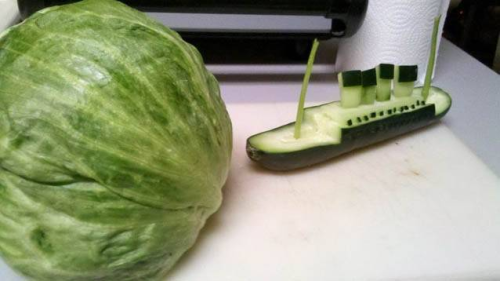
laughing-fit:Hilarious! Food funnies.
wastetheday:lettuce have a moment of silence in remembrance of the titanic
“ICEBERG , ICEBERG!”i’m so done
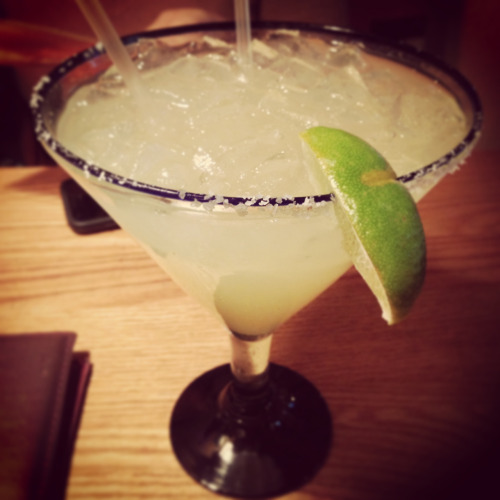
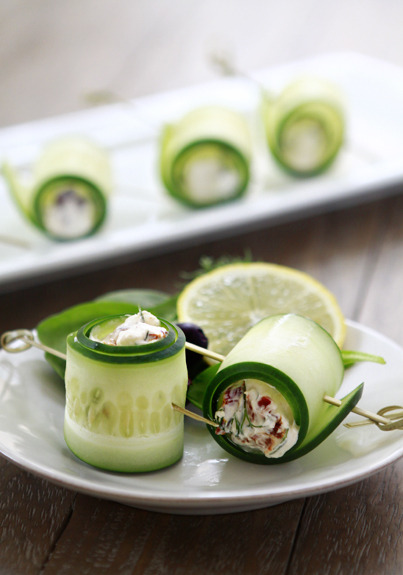
Source: http://thechefslab.tumblr.com/post/43706549514Cucumber Feta Rolls
Get this recipe » http://bit.ly/12MpELY

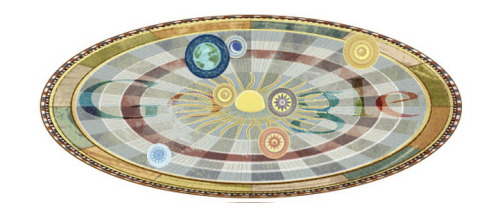
A Polish astronomer and mathematician, Nicolaus Copernicus is a shining star of the Renaissance. His major contribution to science is his heliocentric theory, which asserts that the sun is the center of our solar system. As the Earth was popularly assumed the center of the universe, his heliocentric theory rocked convention. Though the mechanics of this theory has mathematical underpinnings, its radical nature still gave Copernicus some pause. It was, therefore, not until his final year that he published his findings in De Revolutionibus orbium coelestium.
We wanted to celebrate Copernicus and his contributions to the world with a subtly animated doodle. Though revolutionary at the time, the heliocentric model is beautiful in its simplicity. The resulting doodle is zen-like and unassuming. Its actions need not scream for attention, much like the slow publication of De Revolutionibus orbium coelestium. The orbits of the solar system are steady and true.
February 19, 2013
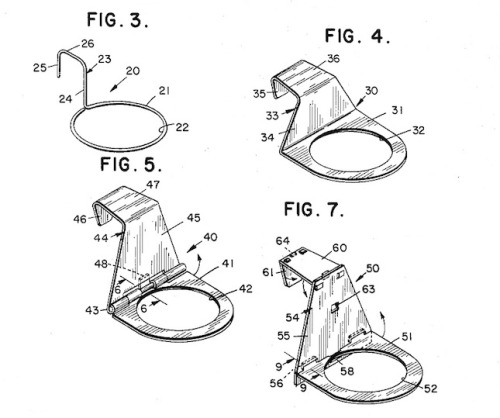
On President’s Day—a.k.a. our national day of auto deals—we look at the history of the cup holder: bonap.it/XY4EOcImage Source (US Patent 2628054)
Ever since George Washington crossed the Delaware to go sign the lease on his new pickup truck (with 0 percent APR!), President’s Day has been associated with getting a good deal on a car. And while some people buy cars based on gas mileage or sporty looks, we all know that the most important parts of a vehicle are its cup holders.
They need to be plentiful, sturdy, and capable of holding any beverage ever created by man, preferably with those little spring-loaded gripper arms to keep your coffee or Big Gulp safe from pothole jostles. Cup holders aren’t just essential for our constant hydration, they’re also the source of our psychological well-being on the road: Clotaire Rapaille, a cultural anthropologist, has theorized that having warm liquid close by in the car brings our subconscious back to the safety of early childhood, and the food-love of our mother’s milk.
But cars weren’t always such happy places. In the dark days of early automotion, designers presumed that drivers would actually stop driving to eat or drink something, so cup holders had no place in interiors. From the get-go, though, aftermarket innovators sought to connect mobile Americans with food. If you were a Model T owner back in the ’20s, you were expected to modify your jalopy with as many doodads as you could afford to order from the Sears catalog, whose Ford gadget section, as E.B. White described it, “was larger than men’s clothing, almost as large as household furnishings.” You could add a flower vase to your dashboard, transform your car from a convertible to a hardtop, fiddle infinitely with the inner workings of your engine—and strap an entire kitchenette to the running boards, complete with a fold-out table and labeled compartments for flour meal, eggs, and ice water.
Real demand for the cup holder didn’t pick up until the 1950s, when drive-ins and drive-thru windows became mainstays of American eating. The very earliest evidence of complete cup-holding comes from a 1950 newspaper clipping that describes a “snack tray for car” that “hangs from dashboard.” The cups were held by metal discs hanging on chains from the tray, and seem to actually be fairly secure.
A few other ideas were floating around, too. Some were bad, like the Automobile Seat Article Holder, patented in 1953, which trusted a hinged plate wedged between the seat cushions to keep your drinks from sloshing around, but one Clyde W. Morgan of Dallas patented a precursor of the modern slide-out cup holder, the Refreshment Tray for Automobile Instrument Panel, which included two wells for beverages.
While inventors tried to fill the cup holder void, manufacturers started including proto-cup holders on the back of glove compartment doors (the earliest documented model with these is a 1955 Chevy). They weren’t anything more than little indentations in the plastic, unsafe for sipping at any speed, but they were a step in the right direction.
The best beverage security system of the era, though, belonged to the 1957 Cadillac Eldorado Brougham. Plenty of ultra-luxurious limousines had had built-in bars, but the Brougham was the first to come with a magnetized glove compartment door and a set of four metal tumblers, perfect for keeping your cognac stable while you’re passing the jitney on the way to the Hamptons.
In the ’60s, trays that would hook into the window well of the door became available, and were fairly commonplace as aftermarket accessories by the ’70s. Patents from the time exist for a more advanced version of Clyde W. Morgan’s pull-out tray, but customers looking for a car with a built-in cup holder were still stuck in the wilderness, or more likely in traffic, trying to turn left and shift into second while balancing their hot mugs of Sanka.
But that all changed in 1983, when Chrysler invented the minivan. The Dodge Caravan and Plymouth Voyager (which were the same car, for the most part) not only saved the company while creating a whole new category of car in the American market, they rolled off the assembly line with two serious cup holders in sunk into the plastic of the dashboard. In the next few years, more and more cars started including cup holders in their interior design—but it would take at least another decade for them to become ubiquitous.
In 1989, US News and World Report was still calling “crannies for drinking cups” an unnecessary “future frill,” but the life-or-death necessity of the cup holder was proven in the infamous 1994 lawsuit, Liebeck v. McDonald’s Restaurants. If you’re too young to remember the hot coffee case (or happened to spend that year renting a nice cave in the Poconos), Stella Liebeck, a 79-year-old woman, sued McDonald’s for damages after spilling 180-degree coffee on her lap in a stationary car. She got third-degree burns from the spill, and was awarded $2.7 million (reduced to $640,000 on appeal) by the jury. The case became fodder for endless Leno monologues and a national argument about tort reform, but it was also a strong argument for industry-wide adoption of the cup holder—if the car she’d been sitting in, her grandson’s Ford Probe, had had even one single cup holder, the whole ordeal might have been avoided.
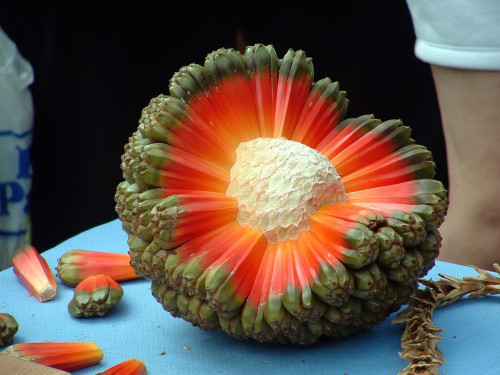
Pandanus tectorius is a species of Pandanus (screwpine) that is native to Malesia, eastern Australia, and the Pacific Islands. Common names include Thatch Screwpine, Hala (Hawaiian), Bacua (Spanish), and Vacquois (French). P. tectorius [Pandan] is a tree that to grows to 4–14 m (13–46 ft) tall.Image Source (mlkshk)
Fruit
The Thatch Screwpine’s fruit is either ovoid, ellipsoid, subglobose or globose with a diameter of 4–20 cm (1.6–7.9 in) and a length of 8–30 cm (3.1–12 in). The fruit is made up of 38–200 wedge-like phalanges, which have an outer fibrous husk. Phalanges contain two seeds on average, with a maximum of eight reported. The phalanges are buoyant, and the seeds within them can remain viable for many months while being transported by ocean currents.
Uses
The fruit can be eaten raw or cooked and is a major source of food in Micronesia, especially in the atolls. The fibrous nature of the fruit also serves as a natural dental floss. The tree’s leaves are often used as flavoring for sweet dishes such as kaya jam [coconut jam], and are also said to have medicinal properties. It is also used in Sri Lankan cookery, where the leaves are used to flavour a variety of curries. Leaves were used by the Polynesians to make baskets, mats, outrigger canoe sails, thatch roofs, and grass skirts.
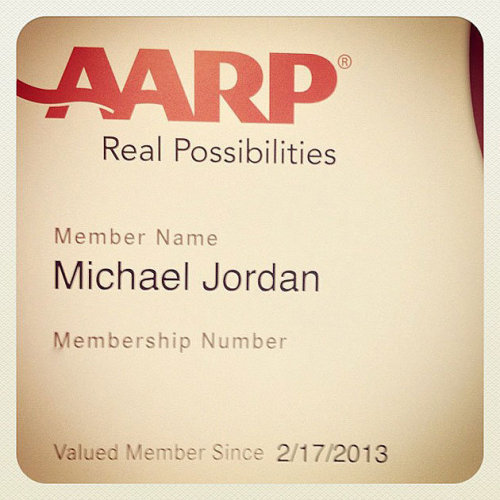
So, if you hadn’t heard, MJ turned 50 today. The AARP gave him the perfect gift. What would you give His Airness? pic.twitter.com/YX1kMh3PHere’s an update on what MJ’s been up to since his last retirement (Source: Huffington Post)
— Yahoo! Sports (@YahooSports) February 17, 2013

Human tongue surface, coloured scanning electron micrograph (SEM). The tongue is covered in many backward facing projections called filiform papillae, which sense pressure. The papillae have a scaly appearance because they are constantly shedding their top layer of skin.The things that help us say “Yum”!
Credit: SCIENCE PHOTO LIBRARY
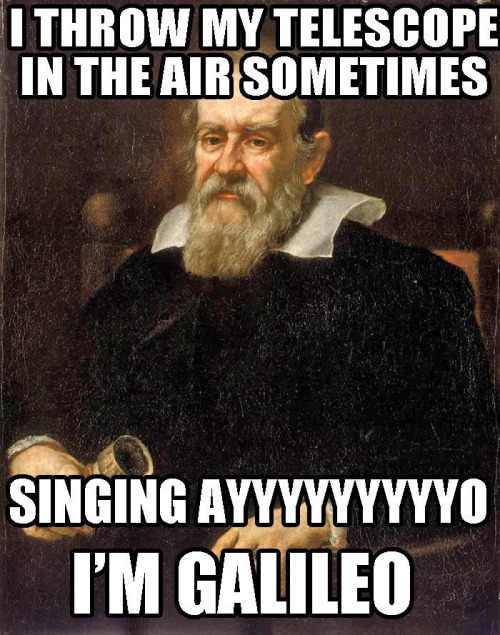

| Cartoon Caricature of a "Scientist" |
Valentine’s Day is typically a hard time for many, namely those who object to the commercialised nature and emphasis on public displays of affection, those who are presently single but would rather not be and find the whole ethos of the day offensive, or some combination of the two. But there is a simple solution to both of these problems: date a scientist.
Scientists are highly educated people with decent career prospects, but are also rarely associated with a fondness for romance and passion (or any other emotional state) so are likely to be apathetic towards Valentine’s Day. Ergo, scientists are the ideal partners.But how does one go about finding, courting and eventually establishing a solid relationship with an elusive and complex scientist? It’s not easy; they are not like other, more simple humans. But what follows is a brief guide for those wishing to make the attempt to woo a scientist.Locating a scientistScientists can be hard to locate. They rarely frequent sporting events, popular music concerts, fairgrounds, organised cockfights or wherever it is non-scientists choose to congregate. A typical scientist is usually found in the laboratory. Gaining access to a laboratory can be very difficult due to the various levels of security in place due to the presence of hazardous materials,tightly regulated conditions and general safety concerns. Access is regulated in both directions, as there is also the ever-present danger of a scientist sneaking out materials to construct a doomsday device.Gaining access to a laboratory (how you achieve this is up to you) is usually sufficient to impress any scientists you find in there. Once you have gained entry, simply approach the scientist of your choice. However, please be sure to wear a lab coat. Scientists are highly trained, and their minds have usually developed to the point where they are unable to perceive someone without a lab coat as an actual person, so will ignore anything such an individual says, much as one would ignore a pigeon cooing at a window.There are instances where you will encounter a scientist outside of the laboratory environment. They may be giving a lecture, or possibly standing in an exotic location looking wistful. In both of these instances, engaging in conversation is impractical, given the context.If you’re lucky, you may encounter one in a pub or similar establishment. A scientist in a social context like this will rarely reveal their occupation, but they can be spotted if you look carefully. For example, if you see someone who is clearly under the influence of alcohol but still using words of 5 syllables or more, then they’re likely to be a scientist. Scientists are also trained to use the metric system, so look for anyone asking for litres instead of pints.Scientists are also typically stood alone in a social environment, looking quite fearful. It’s OK to approach them, but do so slowly and calmly, and if possible hold your hands out, palms open and facing upwards, to emphasise that you pose no threat.Talking to a scientistIt is important to remember that scientists do not converse in a manner similar to non-scientists. When attempting to talk to a scientist, be sure you don’t say anything that might be interpreted as a claim unless you are certain it has been peer-reviewed or subjected to rigorous statistical assessment.This doesn’t apply when discussing fictional constructs, where such review/assessment is impossible. If you are speaking to scientist, it is guaranteed that they will be a fan of Star Wars, Star Trek or Doctor Who. However, they will only be a fan of one of these, mentioning the wrong one will result in the conversation being immediately terminated. Try to discern beforehand which one they are a fan of; there are some distinct signs to look for. For example, wearing a scarf= Doctor Who fan, carrying a Lightsaber= Star Wars fan, speaking Klingon = Star Trek fan.If you do manage to strike up an initial dialogue with a scientist, it’s important to keep things going. Should the conversation falter or hit a lull, try asking the question “How is your grant application going?” This is likely to result in a very long rant about the problems, frustrations and possible illegitimate birth origins of those involved with the grant approval process. You won’t really be needed to keep your end of the discussion going, so feel free to answer your text messages, order more drinks or fill in your tax return while it is happening.At no point should you mention that you have read any of Dan Brown’s novels.Wooing a scientistOnce a connection has been established, this is the point where an attempt to woo the scientist should be made. It is important to tailor your romantic advances to suit the interests and mind-set of a scientist.If you usually opt for chat-up lines, consider using the following.“I am the result of millions of years of evolutionary refinement. If you reject me, you’re essentially a creationist”“You may want to find your ideal romantic partner, but this is statistically unlikely to happen, so you should embrace regression to the mean. And I can be mean”.“Laws of entropy mean that you’re undergoing irreversible decay, so you should go out with me while you are still alive and have your looks”.You may rather opt for the traditional giving of romantic gifts, cards or gestures instead. This is fine, but do remember that scientists desire accuracy above all. For example, if you wish to give them a card adorned with hearts, make sure they’re realistic hearts; atriums, ventricles, papillary muscles, all that. If illustrating your intentions with cherubic figures, make sure their wingspan is sufficient to allow a being of that size to achieve flight.If you succeedPlease be aware that all of the above advice is satirical and definitely should not be followed. If any of the above tips work and you successfully woo your chosen individual, please be very careful; the individual you have engaged with is not a scientist but seemingly a collection of ridiculous stereotypes and antisocial behaviours in apparent human form. If that’s the sort of thing that you prefer in a romantic partner then that’s fine, but proceed at your own risk.

| Be Mine! |
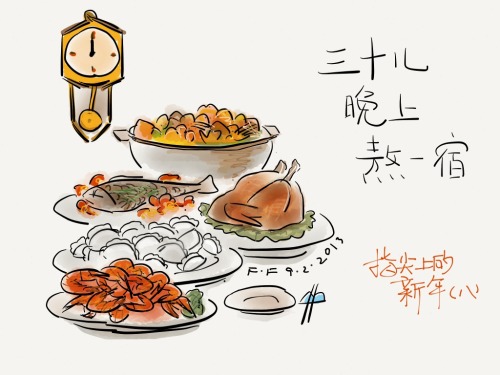
Chinese people are supposed to stay up the whole night on the 30th day of the 12th month in Lunar Calendar. However, there is no 30th day for this year. So Chinese people will take tonight ( 29th day) as the New Year Eve. The folk saying goes like: 三十儿晚上熬一宿. In ancient times, there was a monster called 年 (nian, or year) that would harm people. Later, people found out that the monster routinely came out on New Year’s Eve, so people began to get together on this day, staying up and chatting, hoping for peaceful passage of the time. The custom of staying up symbolises the warding off of all diseases and disasters, wishing for good luck in the New Year. Nowadays, Chinese people will rush back home and have reunion dinner with family members on this day.Made with Paper
 |
| Candy, Nuts, and candied Fruit! |
The Chinese word for fish, yu, for instance, sounds like the word for riches and abundance.
Koi fish in particular represents good fortune, wealth and prosperity. As a result, many shops and restaurants serve items shaped like koi -- from nian gao (a glutinous rice cake more popularly known in the Philippines as tikoy, which is also considered lucky by the Chinese) to pudding and cupcakes.
"Koi, or anything that looks like koi, will bring good luck," Hong Kong-based feng shui master Joseph Chau Kam Ching told ABS-CBNNews.com.
The prosperity toss (or yusheng in Mandarin, lo hei in Cantonese) is a salad containing strips of raw fish, shredded vegetables, and a variety of sauces and condiments. Because of the way the Chinese word for it sounds, the prosperity toss is considered a symbol of prosperity and abundance.
After the dish is prepared, all diners at the table stand up, toss the ingredients and say their wishes.
The ubiquitous Chinese noodles, which are also served during birthdays and other special occasions, are believed to represent long life. It is said that bad luck will come to those who cut the noodles, so eating them may be a little messy.
Fresh fruits such as tangerines and oranges are also popular, as well as trays containing candy, peanuts, pistachios and chocolate coins. All these represent wealth because of their shapes and bright colors.
Chicken symbolizes togetherness when served whole (including the head and the feet), while dumplings with minced meat and vegetables are said to attract more money because they look like silver ingots.
Spring rolls and egg rolls resemble gold bullion and are said to bring more wealth. The same goes for lettuce since sang choi, the Cantonese word for it, sounds like the word for rising fortune.
"Lettuce with root is lucky. Chinese celery and spring onion represent intelligence and hard work, and red carrot symbolizes prosperity. Lotus root is for good relationships," Chau explained.
Rice, meanwhile, is said to bring "permanent prosperity." Chau said a container must be full of rice and accompanied by an ampao, or a red money envelope.
Some of these "lucky" dishes and more will be served in Chinese restaurants across the country, including Mandarin Oriental Manila's Tin Hau.
The "New Year's Five Happiness Combination Platter," for one, contains barbecue suckling pig, roasted pork asado, marinated jellyfish, golden fried shrimp mousse and black moss rolls, and crispy fried anchovies. Tin Hau claims that the platter is a symbol of bountiful harvest and family togetherness.
Other Chinese New Year dishes in the restaurant include deep-fried treats -- from crab meat to scallops and shrimp -- which represent wealth and abundance, according to the Chinese. The all-too-familiar suckling pig, abalone, fried rice and tikoy will also be served.
"An event is not just an event. It's an experience," Chico Angeles, food and beverage director of Mandarin Oriental Manila, said about their annual Chinese New Year celebration.--taken directly from Lucky dishes for the Chinese New Year by Karen Flores

|
| Niner's Cucpakes: Strawberry flavor with Butter Cream frosting, decorated with SF tags, Footballs, and Red & Gold sprinkles |

|
| Groundhog via Rick LaClaire |